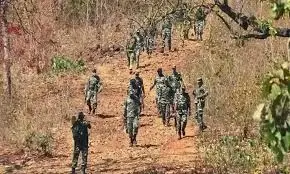Top Maoist leader Basava Raju among 27 killed in encounter with security forces in Chhattisgarh

Chhattisgarh, May 21, 2025 – In a major success for Indian security forces, 27 Maoists, including top leader Basava Raju, died in a fierce encounter near the Narayanpur-Bijapur border. This gunbattle marks a turning point in the fight against left-wing extremism.
Who Was Basava Raju?
Basava Raju, also known as Nambala Keshav Rao or Ganganna, led the CPI (Maoist) as General Secretary. He was one of India’s most wanted extremists. Known for his mastery in explosives and guerrilla tactics, he spent decades planning ambushes and attacks. Raju came from Andhra Pradesh and rose through the Maoist ranks after the former leader, Ganapathy, stepped down.
How the Encounter Unfolded
Acting on precise intelligence, a joint force launched an operation deep inside Chhattisgarh’s forest zone. The District Reserve Guard (DRG), Special Task Force (STF), and Central Reserve Police Force (CRPF) participated in the mission. Soon after entering the area, they spotted armed Maoists and engaged them in a fierce gunfight.
The exchange lasted several hours. By the end, 27 Maoists lay dead, and the troops recovered large quantities of weapons and documents. Officials later confirmed Basava Raju’s identity through sources and forensic verification.
Impact on Maoist Movement
The operation dealt a huge blow to the Maoist command structure. Basava Raju was not only a field strategist but also the group’s ideological anchor. Without him, analysts believe the group may struggle to reorganize and maintain influence.
Security experts say this encounter disrupts the rebels’ leadership pipeline. It may also weaken their ability to plan and coordinate attacks across multiple states.
Government and Public Reactions
Chhattisgarh Chief Minister Vishnu Deo Sai praised the forces for their bravery. He said the state remains committed to peace and development in Maoist-affected regions. Union Home Minister Amit Shah also congratulated the team. He reaffirmed the government’s goal of ending Naxal violence by March 2026.
People and Villages in the Region
Though the encounter was a major win, authorities must remain alert. Villagers living near the conflict zone often face fear and displacement. The government has promised to improve infrastructure, education, and healthcare in these areas. Better roads and local policing could reduce Maoist influence further.
What Lies Ahead?
After this operation, the Maoist group is likely to regroup and appoint new leaders. However, they may face difficulty without Basava Raju’s guidance. Security forces plan to continue combing operations in bordering states like Odisha, Maharashtra, and Telangana.
With this encounter, India has crossed another milestone in its anti-Naxal campaign. Sustained pressure and development efforts may finally bring lasting peace to tribal regions affected by violence for decades.






